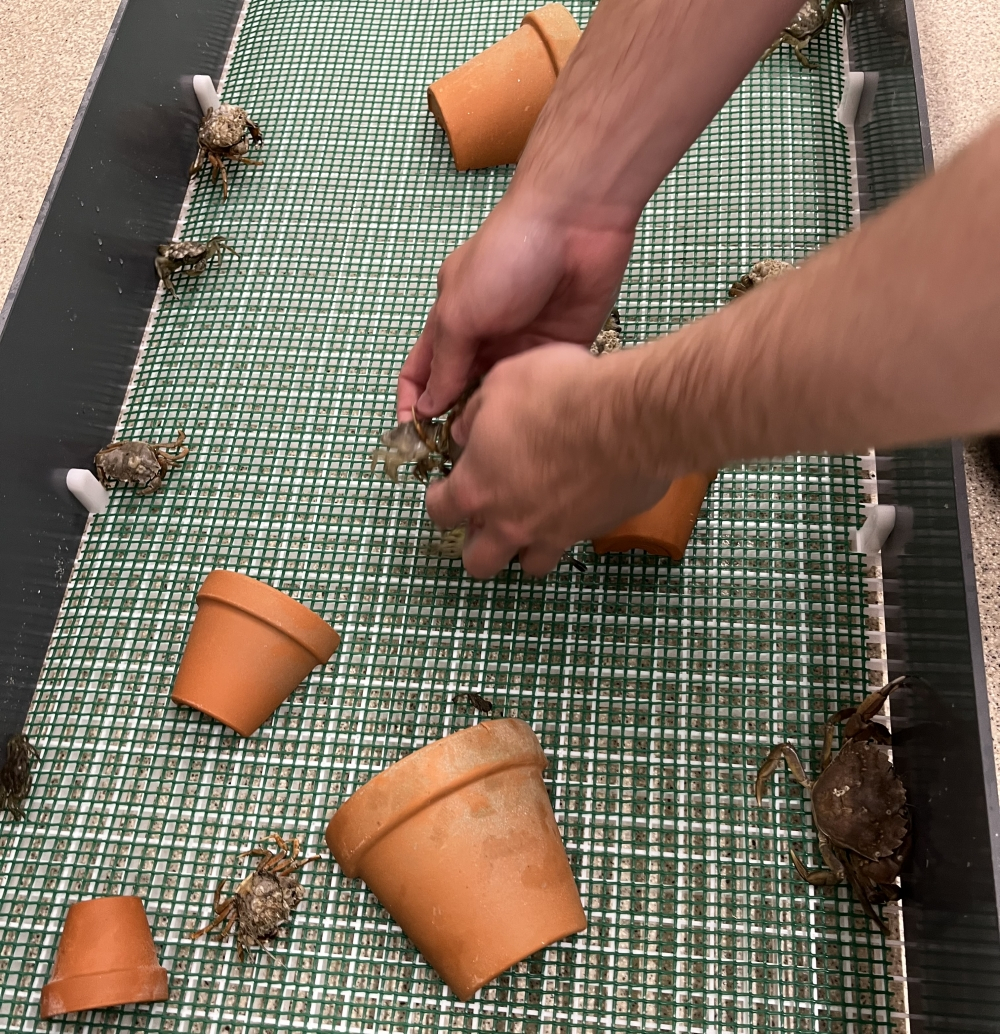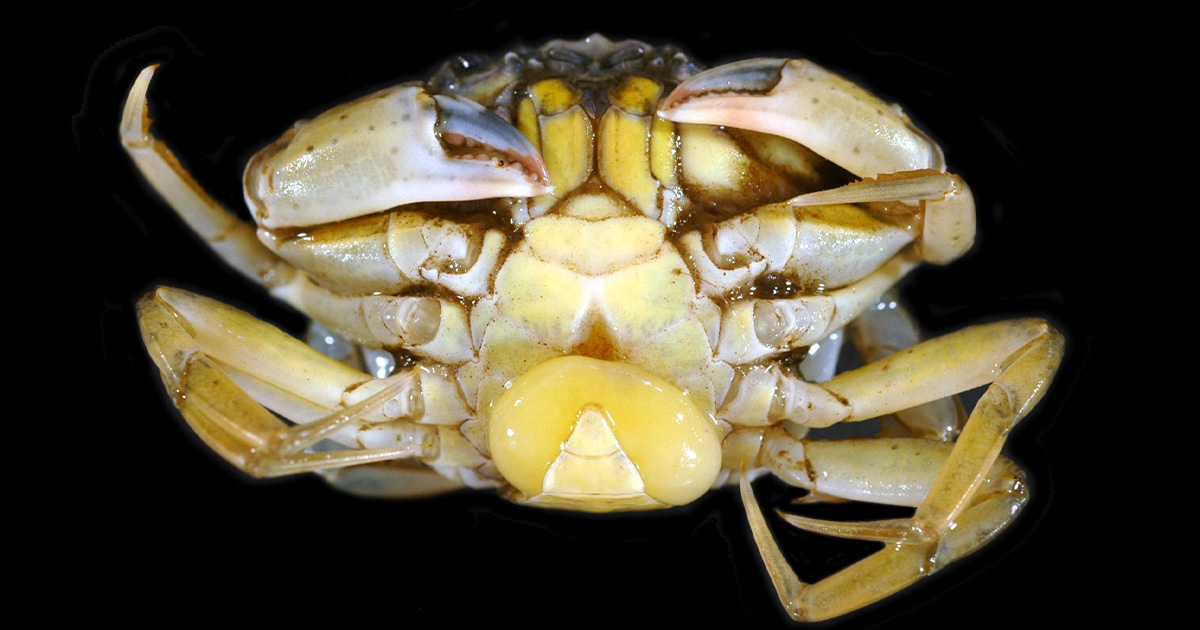A herring in the North Sea, a crab in the Wadden Sea or an anemone fish on a coral reef, ... biologists like to think in terms of individual species that all have their own place within food webs in ecosystems across the world.
"But that is surely too simplistic thinking," NIOZ researcher Ana Born-Torrijos and colleagues warn in this month’s cover story of the scientific journal Trends in Parasitology. "If you ignore the different parasites that live in and on an animal, you might draw very wrong conclusions about its ecology," Born-Torrijos said. “Wild-caught animals should not be considered single individuals, but rather as entire ecosystems by themselves, hosting a variety of microbes and parasites which can be found in virtually every tissue.”
Influence of Parasites
Fish, crabs, snails and other animals can be infected by a multitude of parasites. These include nematodes, cestodes, trematodes, isopods or even copepods that spend part of their lives in the gills of fish. "Those parasites can affect the morphology, the behavior and also the metabolism of animals in many different ways," said Born-Torrijos. "That way, those parasites also influence where an animal fits in the local food chain."
Place in the Food Web
When Born-Torrijos depicts the food chain as a slowly ascending graph, algae and plants as so-called primary producers, which convert sunlight into ‘edible’ energy are in the lower left corner. At the very top right of the graph are the top predators, such as seals in the Wadden Sea. "Where other animals lie along that line, we can determine by looking at the stable isotopes of nitrogen, for example," the researcher explains. "Because with every step along the food chain, the heavy isotopes in that animal’s pool of nitrogen accumulate a little bit thereby indicating who is eating who in the environment."
 Crab experiment. (Image credit: Ana Born-Torrijos, NIOZ)
Crab experiment. (Image credit: Ana Born-Torrijos, NIOZ)
Behavioral Change
In the review article, the researchers describe how an animal’s stable isotope values may differ depending on whether they are infected with parasites or not. "That's because parasites can change the behavior of a host, even without making that host really sick. For example, a coral fish infected by a specific species of isopod, appears to forage much less outside the reef than uninfected individuals of the same species. This is then reflected in the chemical composition of the animal."
Marie Curie
The article also reviews the knowledge accumulated over the past decade in the field of parasite-host interactions. In addition, Born-Torrijos, with a prestigious Marie Skłodowska-Curie Actions Postdoctoral Fellowship, is also working on setting up experimental tests to disentangle the influence of parasites on their hosts. "For example, we keep crabs that are infected or uninfected with a rhizocephalan, a parasitic barnacle that uses rootlets to tap into the tissues of the crab. By feeding the crabs a specific diet for several weeks and then switching them to a diet with a different isotopic composition, we can differentiate the changes in stable isotopes caused by parasitic infections from those caused by their diet. In that way, we aim to find out how infection affects the host’s metabolism and what effect that has on their isotopic composition."
'Parasitome'
In biology, the study of microorganisms on the skin and in the intestines of animals, known as the microbiome, is already an important and accepted area of science. According to Born-Torrijos and colleagues, it is high time that the totality of parasites on an animal, so to speak, ‘the parasitome’, also takes a center stage in research. "Biologists and ecologists might get the wrong picture of the food web if they ignore the influence of parasites," Born-Torrijos stresses.
Journal Reference:
- Ana Born-Torrijos, Philip Riekenberg, Marcel T.J. van der Meer, Milen Nachev, Bernd Sures, David W. Thieltges. Parasite effects on host’s trophic and isotopic niches. Trends in Parasitology, 2023; 39 (9): 749 DOI: 10.1016/j.pt.2023.06.003



